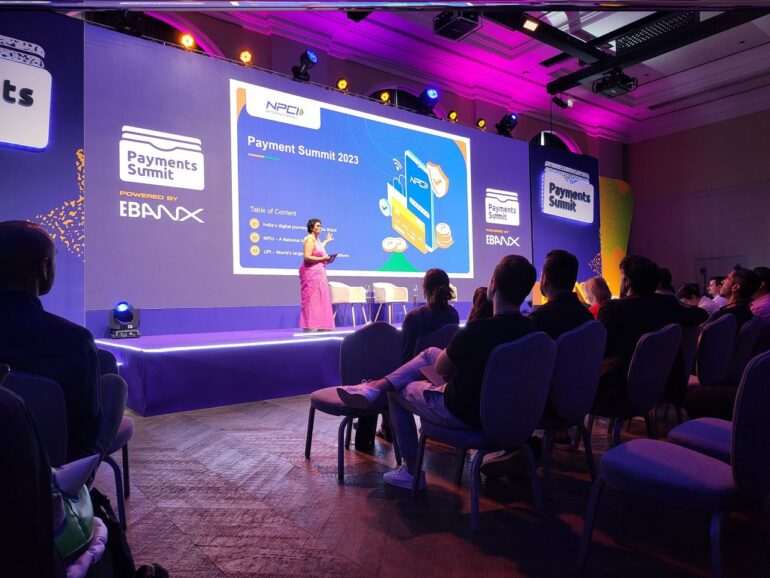While Brazil’s PIX instant payment system has undeniably achieved great success, ushering millions into its digital economy, it is by no means the solitary luminary in the realm of emerging market digital payments. UPI, a comparable initiative introduced in India in 2016, too, has garnered substantial global recognition for its strides in enhancing financial inclusion.
At the recent Ebanx Payment Summit in São Paulo, UPI’s similarities with PIX took center stage. Maria Francis, an executive at NPCI (National Payments Corporation of India), the non-profit entity overseeing UPI, referred to it as PIX’s “older brother.” “It is basically the same thing,” she said.
An NGO oversees India’s UPI, whereas Brazil’s PIX is under the direct operation of the central bank. India’s early launch has endowed it with additional features, like recurring payments, which Brazil is currently striving to incorporate into PIX. This underscores the similarities in the roadmap of these two emerging market experiments.
PIX and UPI have lots in common
But they have a lot in common. First, outstanding numbers.
In Brazil, Pix emerged during the height of stringent pandemic lockdowns when Brazilians were compelled to swiftly acquire digital proficiency. The response was immediate, with Pix rapidly gaining adoption, adding millions of users each month. Today, it stands as a cornerstone of Brazil’s digital landscape. It boasts over 140 million users, equivalent to nearly two-thirds of the population.
In India, PIX’s “older brother,” UPI, entered the scene years earlier. While its growth trajectory may have been less meteoric, its significance cannot be overstated in a country with a population of 1.4 billion. Recent reports reveal that over 20% of India’s population now relies on digital payments through the UPI system, processing a staggering 7 billion transactions monthly—almost double the volume of its Brazilian counterpart.
Both PIX and UPI have played pivotal roles in ushering their respective economies into the digital era. They have laid the groundwork for physical and online transactions. Local financial institutions have driven this transformation, with Pix connecting with nearly 800 banks and fintechs. Meanwhile, India’s UPI network encompasses close to 500 banks.
UPI was established in 2016, PIX in 2020
Established in April 2016 by the NPCI, UPI initially functioned as a savings and checking account. Over time, it has evolved to encompass various features, including credit overdrafts, offline payments, recurring payments, and prepaid accounts.
Both, too, share a common path forward. Brazil’s regulator is working on Drex, as the Digital Real project has been coined. Currently, in the testing phase, this technology is poised for launch, promising full integration with Pix by the end of the next year. In India, UPI is exploring the integration of stablecoins and central bank digital currencies (CBDCs), as revealed by Francis, NPCI’s official. Both PIX and UPI are also actively exploring international expansion opportunities, marking their shared ambitions on a global scale.
Ebanx expands to India, other African markets
The surge in digital payments within the Asian economy has undeniably caught the attention of Latin American fintech unicorns. This month, Ebanx, a payment fintech from Brazil, unveiled its plan to expand its footprint into India, marking a milestone beyond its home region.

“India is our new jewel,” João del Valle, CEO and co-founder at the company, said. Right off the bat, the company would significantly grow its potential reach for customers, offering payments in UPI as part of its initial rollout. “We are basically doubling the number of people we can connect to global commerce,” he said.
Founded in 2012, Ebanx has focused on facilitating cross-border payments among several Latin American countries. Global companies such as Spotify, Airbnb and Alibaba are reportedly among its clients. Over the years, the fintech unicorn has become a prominent participant in Brazil’s central bank-regulated instant payment system, PIX, and has since last year expanded to new regions such as Africa, and now, Asia.
Its recent Payments event held in São Paulo revolved around harnessing the momentum of the digital payment boom in Asia’s second-largest economy. Initiatives like UPI have played pivotal roles in introducing millions into the digital economy, making India an enticing destination for expansion.
India’s booming digital commerce
In recent years, Latin America has witnessed a rapid surge in fintech initiatives, fueled by an unprecedented boom in venture capital investment. While this region continues to offer a plethora of opportunities to advance payments and e-commerce, the sheer scale of the Indian economy and the substantial ground it has yet to cover have undeniably attracted global players.
“India has a middle class of almost 500 million people,” said Abhishek Banerjee, a former Western Union official and specialist in the Indian payments sector. “That is how big the potential is.”
India’s onward trajectory toward becoming the world’s third-largest economy by 2027, surpassing Japan and Germany, may result in its GDP more than doubling by 2031, reaching a remarkable USD 7.5 trillion, as projected by Morgan Stanley.
Following a sharp growth in digital commerce, the number of online shoppers in the country now reaches 350 million people, according to data posted by Ebanx at the conference. This is far larger, for instance, than 100 million in Brazil. It presents an attractive opportunity for fintechs providing the necessary rails to deliver digital payments.
But it still lags many of its emerging market peers. The percentage of its population shopping online went from just 1% in 2010 to over 30%, a great leap forward but still short of 56% in Brazil, 75% in China or 64% in Mexico.
“That just means 70% of the population has yet to enter the marketplace,” Paula Bellizia, global payments president at Ebanx, said, highlighting the potential for digital payment providers to tap into this market.


